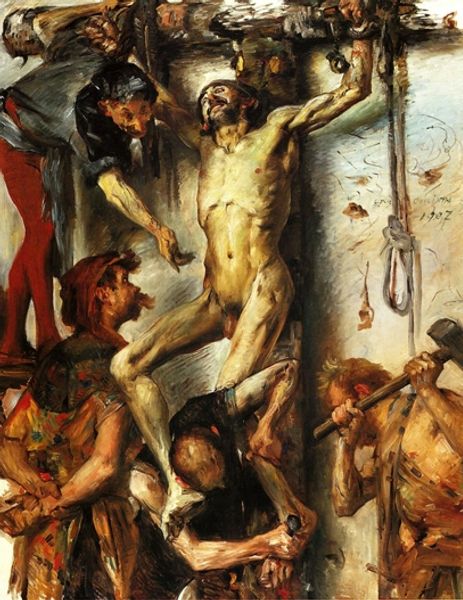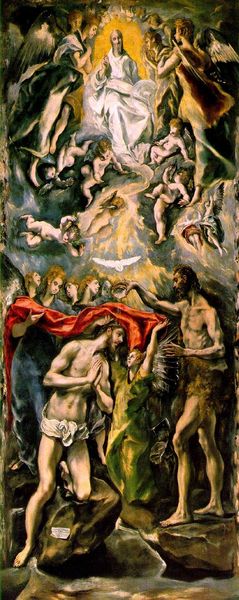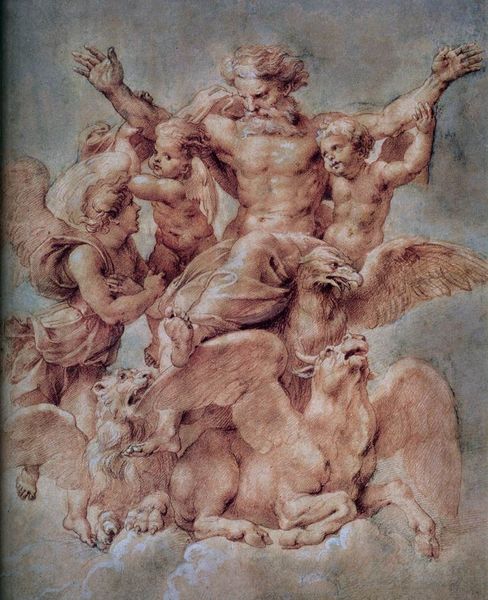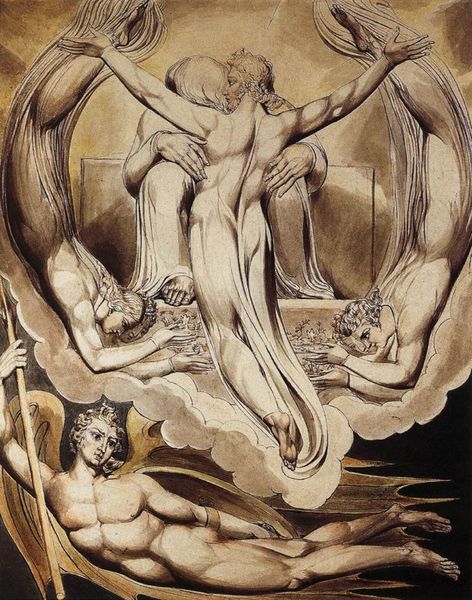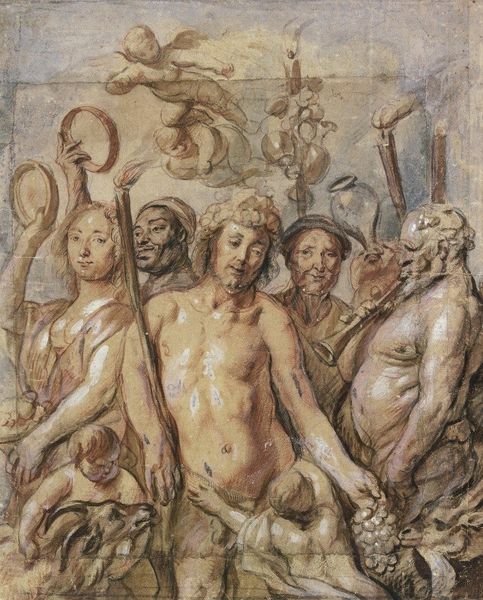
oil-paint
#
oil-paint
#
figuration
#
oil painting
#
group-portraits
#
expressionism
#
human
#
history-painting
#
nude
#
watercolor
#
expressionist
Copyright: Public domain US
Editor: Max Oppenheimer’s "Condemnation," created in 1913 using oil paint, presents a chaotic scene. The raw brushstrokes and somber tones really emphasize the physical struggle that seems to be happening. How do you interpret the relationship between the materials used and the themes explored in this painting? Curator: It’s crucial to consider the materials first: oil paint. Its accessibility during this period meant art production became increasingly democratized, though debates still raged about who had access to ‘legitimate’ artistic training and spaces. Look at how Oppenheimer deploys it – the thickness, the texture. He’s not just depicting figures, he’s enacting a kind of brutality with the paint itself. It becomes a material manifestation of the act of condemnation. Editor: That makes sense. So, the value of the artwork isn’t just in its visual representation, but also in understanding the labor and material conditions that went into making it? Curator: Precisely! Think about where Oppenheimer sourced his materials, his studio space. Who were his patrons? These are all material factors that impact how we read this painting. The ‘condemnation’ isn’t just of the figure depicted, but perhaps a critique of the society and economic forces at play in 1913 that led to such…visceral displays of power? What sort of social condemnation did artists face if they weren't making "acceptable" art at the time? Editor: I hadn’t considered it that way. So, by focusing on the materiality and the process, we can start to unpack larger social commentaries that the artwork may be making? Curator: Exactly! It pushes us to see beyond the surface and to question the relationships between art, labor, and societal structures. Editor: Thanks, this has totally changed how I look at "Condemnation." I'm much more aware of the artwork as a product of specific conditions of labor. Curator: My pleasure! And always remember to consider art as both an object *and* a process embedded in its unique cultural time.
Comments
No comments
Be the first to comment and join the conversation on the ultimate creative platform.
